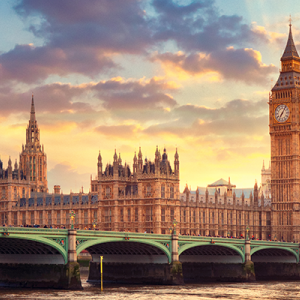By Tony Travers
18 February 2010
Safeguarding the budgets of health and education could leave unprotected public services facing cuts of up to 50%. Wouldn’t it be fairer to plug the fiscal hole by ‘salami-slicing’ the whole lot, asks Tony Travers
The obfuscation surrounding the future of Britain’s public services will end, with luck, once the general election is behind us. Until then, ministers and their shadows will continue to refuse to give straight answers to questions about future plans for spending on any services that will not be protected from the cuts that lie ahead.However, it is increasingly clear from independent analysts that some parts of public provision will have to be subjected to the deepest cuts in modern times.
This article is mostly concerned not with the cared-for sectors such as the NHS, schools and international development, but with the unloved, vulnerable and unmentioned ones.
The Institute for Fiscal Studies’ recently published Green Budget examined what are, for the government and Opposition, the cuts that dare not speak their name. If growth turns out to be, say, 2% or 2.5% instead of the 3.5% predicted by the chancellor, or if the economy slips back into recession, then the demand to cut expenditure and/or raise taxes will be even greater than the IFS – or this article – envisages. For finance directors, things can only get worse.
The overriding narrative for the public services derives from Chancellor Alistair Darling’s commitment to halve Britain’s £178bn deficit by 2014/15. He is currently pushing through the Fiscal Responsibility Bill, which is intended to force the government to do what it says it wants to do. The implication of this is that the international markets would not trust the government if it did not bind itself legally to halve the deficit. Let’s hope the markets have never heard about Parliament’s powers to repeal legislation.
Public expenditure will be frozen in real terms over the period 2011/12 to 2014/15. Within this overall total lies a 14.4% per annum cut in capital spending and a 0.7% rise in current spending in each year from 2011/12 to 2014/15. Before looking at the 0.7% real-terms ‘current’ rise, it is worth spending a moment considering the implications of the near 15% per annum cut in capital investment.
By common consent, the country will need to encourage growth in the private sector so as to generate tax income to bring down the mega-deficit. But the government is planning to take the axe to investment in transport, roads, house building, hospitals and other infrastructure. This decision is surely wrong, and cannot be explained away by pointing to ‘record levels of investment’ in recent years. Britain, by virtue of its history, has some of the creakiest public assets in the world. Competitor economies in the Far East are building railways, metros, roads and urban infrastructure at an accelerating rate. Are the 2010s really such a good time to be cutting back on public investment in basic infrastructure?
Of course, any effort to reduce the scale of cuts to public sector capital spending would increase the reductions required elsewhere if the government’s overall spending cut target is to be hit. Promises made by the government and Opposition to protect – at least for a period – current spending by the NHS, international development and, to some extent, schools will already intensify the pressure on all other services. Worse still, the cost of the social security budget is expected to continue to rise in real terms, generating even greater demands for reductions in the unprotected services.
This brings us to the nub of the issue. How big will the scale of reductions be to the services that have not been singled out by government or Opposition for special treatment? Which services are being lined up to take all the cuts? Will the public quietly assent to the concentration of reductions in a small number of sectors and sub-sectors? The recent response to a relatively small cut to university funding suggests what lies ahead will be bloody indeed.
The IFS has calculated that if the present government were to ring-fence the ‘protected’ services only until the end of 2012/13, the impact on all other provision would be a 12.9% cut in the two years 2011/12 and 2012/13. If the protection were to continue till the end of 2014/15, the overall cut would be 23.8%. A similar analysis of a possible Conservative government’s policies, on the basis of a slightly different bundle of protected services and a more ambitious plan to reduce the deficit, would cut spending on the ‘unprotected’ provision by between 18.3% and 22.8% by 2014/15.
A safe ‘middle range’ would be somewhere between 15% and 20% reductions by 2014/15, although even this estimate assumes, optimistically, a resumption of strong growth and tax revenues. Slower growth or another recession would increase the need for reductions in expenditure.
The major provision included in this ‘unloved’ block include defence, children’s services, older people’s social care, transport, housing, the environment and almost everything else local government does. Defence, following the publication of the government’s Strategic Defence Review, is the subject of a major national debate about Britain’s future role in the world and as a player at bodies such as the United Nations. It seems unlikely its frontline activities will be cut by 15%–20%.
Within councils, the pressures on some services will therefore be very stark. In 2009/10, children’s services, social care for elderly people and social services for adults in England will spend £20.3bn out of a total net current expenditure of £115.5bn. Children’s services spend £6bn; services for elderly people, £7.4bn; and adult services, about £6.9bn. If we apply the ‘15%–20% cuts by 2014/15 rule’ to this social services spending figure, it would suggest cuts of between £3bn and £4bn. That is, children’s social care and services for older people and vulnerable adults would be facing cuts of £1bn–£1.5bn each.
Is this level of reductions politically possible, given the recent childcare failure stories, mental health-related ‘community care’ problems and the growing numbers of very elderly people? It is hard to imagine so. Council leaders and officials will come under huge pressure to protect social services for young people, adults and older people, particularly because of the dire consequences of failure. In many ways, social care is local government’s equivalent of the NHS.
So what about the police? Its expenditure in 2009/10 is £12.2bn. It might be a little easier to trim elements of the police budget than, say, children’s services. But is it really feasible to imagine lopping £1.4bn–£2.4bn off the police, presumably translating through into a reduction of 15%-20% in police officer numbers? It is easy to imagine chief constables pulling out all the stops, including the ‘continuing threat of terrorism’ and the prospect of a ‘broken Britain’ to keep reductions to a minimum. Thus, there will be pressure to protect most of the police’s spending.
Almost all local education spending is now funded via the Dedicated Schools Grant. Schools’ spending is virtually the whole of the £43bn spent by councils on education. Education Secretary Ed Balls has committed Labour to real-terms increases in schools funding for the next Spending Review period. Rent allowances and rent rebates would also, presumably, be protected as part of the national social security arrangements.
So, it seems likely that schools, social care, the police and social security payments will be given significant protection from cuts. Thus, councils would find themselves attempting to make the whole of their 15%-20% spending reduction by cutting other, unprotected, provision. Broadly, this would require cuts of between £10.9bn and £14.5bn out of the £25.4bn spent on services such as highways & transport, fire & rescue, housing, culture, leisure, libraries, public health, the environment and central administration.
That could mean cuts of at least 40% to 50% on all the ‘unprotected’ services in the years 2011/12 to 2014/15. Even if rent allowances and rebates are removed from both sides of the calculations, the reductions required from the unloved services could still be over 30%.
Expect to see big potholes, dirty streets and raging fires. The more the logic of the public debate about which services and benefits must be protected migrates into local government, it is inevitably going to create the political space for horror stories. Unless ministers and councillors are prepared to spread spending cuts almost evenly across children’s services, care for elderly people, the police and all their other provision, the pain felt in those that are not given protection will be seriously amplified. The fact that children’s services, adult protection and social care for elderly people are, together, local government’s biggest spending heads, simply makes the problem even more difficult.
Moreover, as David Clark, chief executive of the Society of Local Authority Chief Executives, has pointed out, many councils are signed up to long-term contracts that further limit their scope for action.
Outgoing Audit Commission chief executive Steve Bundred has, on a number of occasions, suggested that the NHS and schools should not be protected from the impact of the public expenditure squeeze. Think-tanks have put forward ideas, including removing some universal benefits and/or holding down the value of social security payments. In Ireland and Latvia, there have been cuts in public sector pay and even in welfare payments. If Darling’s or shadow chancellor George Osborne’s borrowing figures are to fall to between 5% and 6% of gross domestic product by 2014/15, either spending will have to fall as suggested here or there will have to be significant tax rises for average earners.
No frontline politician seems willing to argue for a hike in taxes, although some commentators believe higher ongoing borrowing might just be possible. Both major parties accept (preferably stealthy) tax increases will be part of the deficit reduction strategy, but they also want public spending to bear much of the strain of cutting borrowing. This brings us back to whether it is possible to skew what now appear to be inevitable cuts so that defence, the fire service, highways, libraries, the environment and capital investment bear almost all the impact. Almost certainly it is not.
This means that either vast conventional ‘efficiencies’ or ‘Total Place’ savings will be required. Total Place could be an enormously effective way of making radical reductions in spending, but to do so would require progress at emergency speed. At present, Whitehall is showing no willingness to allow public services to move to a brave, new, Total Place world within the next two or three years.
Alternatively, Britain will find itself forced into an across-the-board, salami-slice cutting regime. At its simplest, the Darling approach to public spending could broadly be achieved if all spending, current and capital, were frozen at 2010/11 levels till the end of 2014/15.
While a little simplistic, the idea of sharing the pain might actually be easier to manage than the alternative policy of concentrating massive cuts within some services. There is even a kind of fairness in a policy that would put all services and all areas under similar pressure. Such a policy would also protect a number of universal services, such as street cleaning and the fire brigade, which rich and poor alike use. Capital investment would not be savaged. Greece’s huge debt problems are a warning to national politicians of what can happen when deep cuts occur.
Nearer to home, Birmingham City Council last week announced the loss of 1,500–2,000 jobs and a pay freeze. This is a leading indicator of local spending pressures if ever there were one. We cannot go on with the current bipartisan, national approach to the future of spending on public services, with the fire service, environmental provision, the arts, libraries and highways bearing a vastly disproportionate share of the cuts. It would be bad government and probably impossible to achieve. The sooner national politicians adjust themselves to this reality, the better.
Tony Travers is director of the Greater London Group at the London School of Economics
18 February 2010
Safeguarding the budgets of health and education could leave unprotected public services facing cuts of up to 50%. Wouldn’t it be fairer to plug the fiscal hole by ‘salami-slicing’ the whole lot, asks Tony Travers
The obfuscation surrounding the future of Britain’s public services will end, with luck, once the general election is behind us. Until then, ministers and their shadows will continue to refuse to give straight answers to questions about future plans for spending on any services that will not be protected from the cuts that lie ahead.However, it is increasingly clear from independent analysts that some parts of public provision will have to be subjected to the deepest cuts in modern times.
This article is mostly concerned not with the cared-for sectors such as the NHS, schools and international development, but with the unloved, vulnerable and unmentioned ones.
The Institute for Fiscal Studies’ recently published Green Budget examined what are, for the government and Opposition, the cuts that dare not speak their name. If growth turns out to be, say, 2% or 2.5% instead of the 3.5% predicted by the chancellor, or if the economy slips back into recession, then the demand to cut expenditure and/or raise taxes will be even greater than the IFS – or this article – envisages. For finance directors, things can only get worse.
The overriding narrative for the public services derives from Chancellor Alistair Darling’s commitment to halve Britain’s £178bn deficit by 2014/15. He is currently pushing through the Fiscal Responsibility Bill, which is intended to force the government to do what it says it wants to do. The implication of this is that the international markets would not trust the government if it did not bind itself legally to halve the deficit. Let’s hope the markets have never heard about Parliament’s powers to repeal legislation.
Public expenditure will be frozen in real terms over the period 2011/12 to 2014/15. Within this overall total lies a 14.4% per annum cut in capital spending and a 0.7% rise in current spending in each year from 2011/12 to 2014/15. Before looking at the 0.7% real-terms ‘current’ rise, it is worth spending a moment considering the implications of the near 15% per annum cut in capital investment.
By common consent, the country will need to encourage growth in the private sector so as to generate tax income to bring down the mega-deficit. But the government is planning to take the axe to investment in transport, roads, house building, hospitals and other infrastructure. This decision is surely wrong, and cannot be explained away by pointing to ‘record levels of investment’ in recent years. Britain, by virtue of its history, has some of the creakiest public assets in the world. Competitor economies in the Far East are building railways, metros, roads and urban infrastructure at an accelerating rate. Are the 2010s really such a good time to be cutting back on public investment in basic infrastructure?
Of course, any effort to reduce the scale of cuts to public sector capital spending would increase the reductions required elsewhere if the government’s overall spending cut target is to be hit. Promises made by the government and Opposition to protect – at least for a period – current spending by the NHS, international development and, to some extent, schools will already intensify the pressure on all other services. Worse still, the cost of the social security budget is expected to continue to rise in real terms, generating even greater demands for reductions in the unprotected services.
This brings us to the nub of the issue. How big will the scale of reductions be to the services that have not been singled out by government or Opposition for special treatment? Which services are being lined up to take all the cuts? Will the public quietly assent to the concentration of reductions in a small number of sectors and sub-sectors? The recent response to a relatively small cut to university funding suggests what lies ahead will be bloody indeed.
The IFS has calculated that if the present government were to ring-fence the ‘protected’ services only until the end of 2012/13, the impact on all other provision would be a 12.9% cut in the two years 2011/12 and 2012/13. If the protection were to continue till the end of 2014/15, the overall cut would be 23.8%. A similar analysis of a possible Conservative government’s policies, on the basis of a slightly different bundle of protected services and a more ambitious plan to reduce the deficit, would cut spending on the ‘unprotected’ provision by between 18.3% and 22.8% by 2014/15.
A safe ‘middle range’ would be somewhere between 15% and 20% reductions by 2014/15, although even this estimate assumes, optimistically, a resumption of strong growth and tax revenues. Slower growth or another recession would increase the need for reductions in expenditure.
The major provision included in this ‘unloved’ block include defence, children’s services, older people’s social care, transport, housing, the environment and almost everything else local government does. Defence, following the publication of the government’s Strategic Defence Review, is the subject of a major national debate about Britain’s future role in the world and as a player at bodies such as the United Nations. It seems unlikely its frontline activities will be cut by 15%–20%.
Within councils, the pressures on some services will therefore be very stark. In 2009/10, children’s services, social care for elderly people and social services for adults in England will spend £20.3bn out of a total net current expenditure of £115.5bn. Children’s services spend £6bn; services for elderly people, £7.4bn; and adult services, about £6.9bn. If we apply the ‘15%–20% cuts by 2014/15 rule’ to this social services spending figure, it would suggest cuts of between £3bn and £4bn. That is, children’s social care and services for older people and vulnerable adults would be facing cuts of £1bn–£1.5bn each.
Is this level of reductions politically possible, given the recent childcare failure stories, mental health-related ‘community care’ problems and the growing numbers of very elderly people? It is hard to imagine so. Council leaders and officials will come under huge pressure to protect social services for young people, adults and older people, particularly because of the dire consequences of failure. In many ways, social care is local government’s equivalent of the NHS.
So what about the police? Its expenditure in 2009/10 is £12.2bn. It might be a little easier to trim elements of the police budget than, say, children’s services. But is it really feasible to imagine lopping £1.4bn–£2.4bn off the police, presumably translating through into a reduction of 15%-20% in police officer numbers? It is easy to imagine chief constables pulling out all the stops, including the ‘continuing threat of terrorism’ and the prospect of a ‘broken Britain’ to keep reductions to a minimum. Thus, there will be pressure to protect most of the police’s spending.
Almost all local education spending is now funded via the Dedicated Schools Grant. Schools’ spending is virtually the whole of the £43bn spent by councils on education. Education Secretary Ed Balls has committed Labour to real-terms increases in schools funding for the next Spending Review period. Rent allowances and rent rebates would also, presumably, be protected as part of the national social security arrangements.
So, it seems likely that schools, social care, the police and social security payments will be given significant protection from cuts. Thus, councils would find themselves attempting to make the whole of their 15%-20% spending reduction by cutting other, unprotected, provision. Broadly, this would require cuts of between £10.9bn and £14.5bn out of the £25.4bn spent on services such as highways & transport, fire & rescue, housing, culture, leisure, libraries, public health, the environment and central administration.
That could mean cuts of at least 40% to 50% on all the ‘unprotected’ services in the years 2011/12 to 2014/15. Even if rent allowances and rebates are removed from both sides of the calculations, the reductions required from the unloved services could still be over 30%.
Expect to see big potholes, dirty streets and raging fires. The more the logic of the public debate about which services and benefits must be protected migrates into local government, it is inevitably going to create the political space for horror stories. Unless ministers and councillors are prepared to spread spending cuts almost evenly across children’s services, care for elderly people, the police and all their other provision, the pain felt in those that are not given protection will be seriously amplified. The fact that children’s services, adult protection and social care for elderly people are, together, local government’s biggest spending heads, simply makes the problem even more difficult.
Moreover, as David Clark, chief executive of the Society of Local Authority Chief Executives, has pointed out, many councils are signed up to long-term contracts that further limit their scope for action.
Outgoing Audit Commission chief executive Steve Bundred has, on a number of occasions, suggested that the NHS and schools should not be protected from the impact of the public expenditure squeeze. Think-tanks have put forward ideas, including removing some universal benefits and/or holding down the value of social security payments. In Ireland and Latvia, there have been cuts in public sector pay and even in welfare payments. If Darling’s or shadow chancellor George Osborne’s borrowing figures are to fall to between 5% and 6% of gross domestic product by 2014/15, either spending will have to fall as suggested here or there will have to be significant tax rises for average earners.
No frontline politician seems willing to argue for a hike in taxes, although some commentators believe higher ongoing borrowing might just be possible. Both major parties accept (preferably stealthy) tax increases will be part of the deficit reduction strategy, but they also want public spending to bear much of the strain of cutting borrowing. This brings us back to whether it is possible to skew what now appear to be inevitable cuts so that defence, the fire service, highways, libraries, the environment and capital investment bear almost all the impact. Almost certainly it is not.
This means that either vast conventional ‘efficiencies’ or ‘Total Place’ savings will be required. Total Place could be an enormously effective way of making radical reductions in spending, but to do so would require progress at emergency speed. At present, Whitehall is showing no willingness to allow public services to move to a brave, new, Total Place world within the next two or three years.
Alternatively, Britain will find itself forced into an across-the-board, salami-slice cutting regime. At its simplest, the Darling approach to public spending could broadly be achieved if all spending, current and capital, were frozen at 2010/11 levels till the end of 2014/15.
While a little simplistic, the idea of sharing the pain might actually be easier to manage than the alternative policy of concentrating massive cuts within some services. There is even a kind of fairness in a policy that would put all services and all areas under similar pressure. Such a policy would also protect a number of universal services, such as street cleaning and the fire brigade, which rich and poor alike use. Capital investment would not be savaged. Greece’s huge debt problems are a warning to national politicians of what can happen when deep cuts occur.
Nearer to home, Birmingham City Council last week announced the loss of 1,500–2,000 jobs and a pay freeze. This is a leading indicator of local spending pressures if ever there were one. We cannot go on with the current bipartisan, national approach to the future of spending on public services, with the fire service, environmental provision, the arts, libraries and highways bearing a vastly disproportionate share of the cuts. It would be bad government and probably impossible to achieve. The sooner national politicians adjust themselves to this reality, the better.
Tony Travers is director of the Greater London Group at the London School of Economics



















